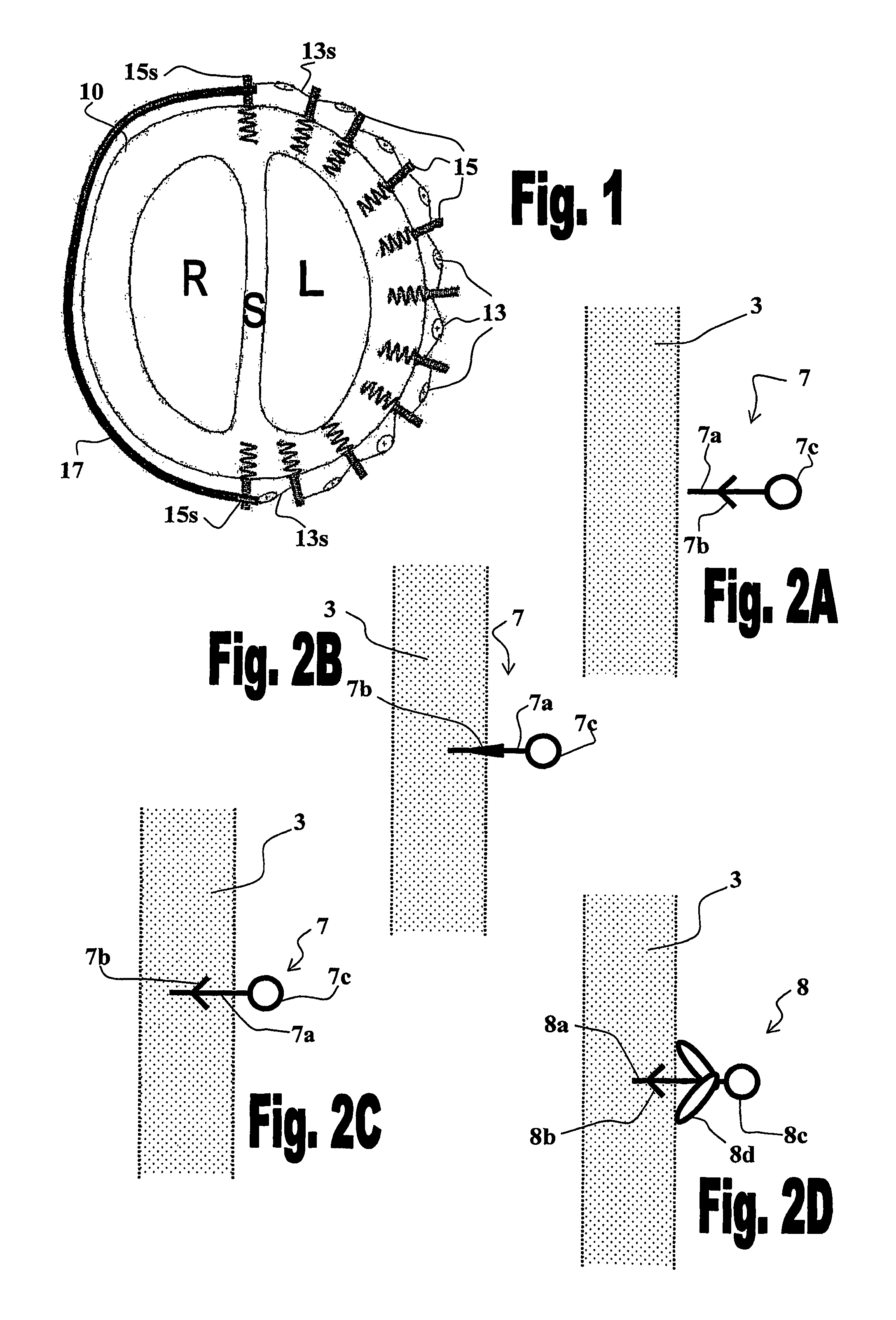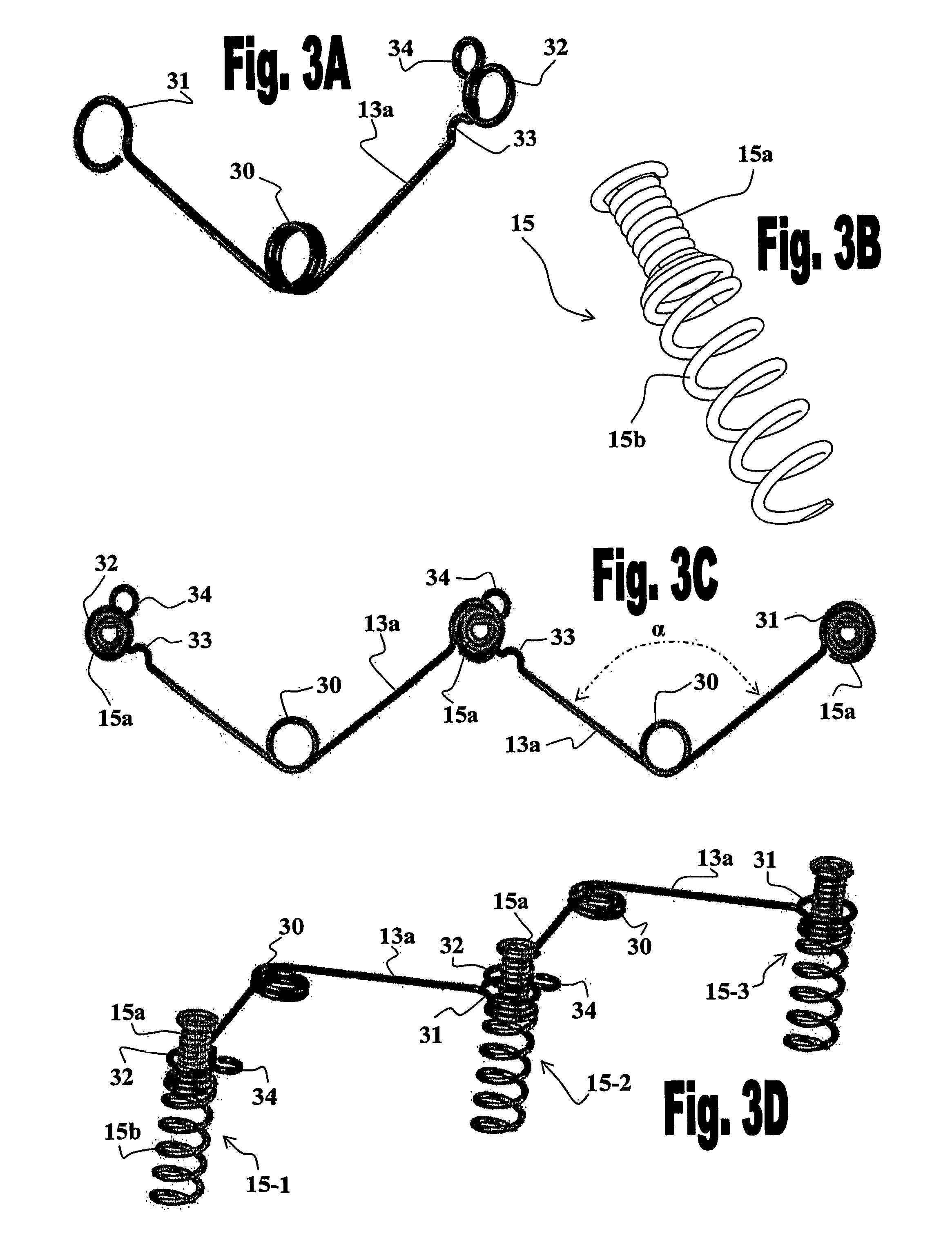Method and system for improving diastolic function of the heart
a diastolic function and diastolic technology, applied in the field of diastolic function improvement methods and systems, can solve the problems of pulmonary congestion and peripheral edema, and achieve the effects of preventing the restriction of the myocardium, enabling versatility and modularity of the implantation procedure, and increasing the variability of the total for
- Summary
- Abstract
- Description
- Claims
- Application Information
AI Technical Summary
Benefits of technology
Problems solved by technology
Method used
Image
Examples
Embodiment Construction
[0066]The present invention provides various embodiments of ventricular function assisting devices designed for treating diastolic and / or systolic dysfunctions. The devices of the invention are designed to assist in the operation of the heart by aiding in reducing the pressures thereinside during systolic function, and aiding in increasing the pressure during diastolic function. The present invention further provides means for mounting a ventricular function assisting device of the invention on the wall of the heart of a treated subject.
[0067]FIG. 1 illustrates a preferred embodiment of the invention wherein a sequence of elastic elements 13 are mounted over the outer wall of the left ventricle (L), and an elastic wire or stretchable cord 17 is mounted over the outer wall of the right ventricle (R), of heart 10, by means of attachment elements 15. Elastic elements 13 preferably have a “U” or “V” like shape which arms include detachable means at their ends for detachably connecting t...
PUM
 Login to View More
Login to View More Abstract
Description
Claims
Application Information
 Login to View More
Login to View More - R&D
- Intellectual Property
- Life Sciences
- Materials
- Tech Scout
- Unparalleled Data Quality
- Higher Quality Content
- 60% Fewer Hallucinations
Browse by: Latest US Patents, China's latest patents, Technical Efficacy Thesaurus, Application Domain, Technology Topic, Popular Technical Reports.
© 2025 PatSnap. All rights reserved.Legal|Privacy policy|Modern Slavery Act Transparency Statement|Sitemap|About US| Contact US: help@patsnap.com



